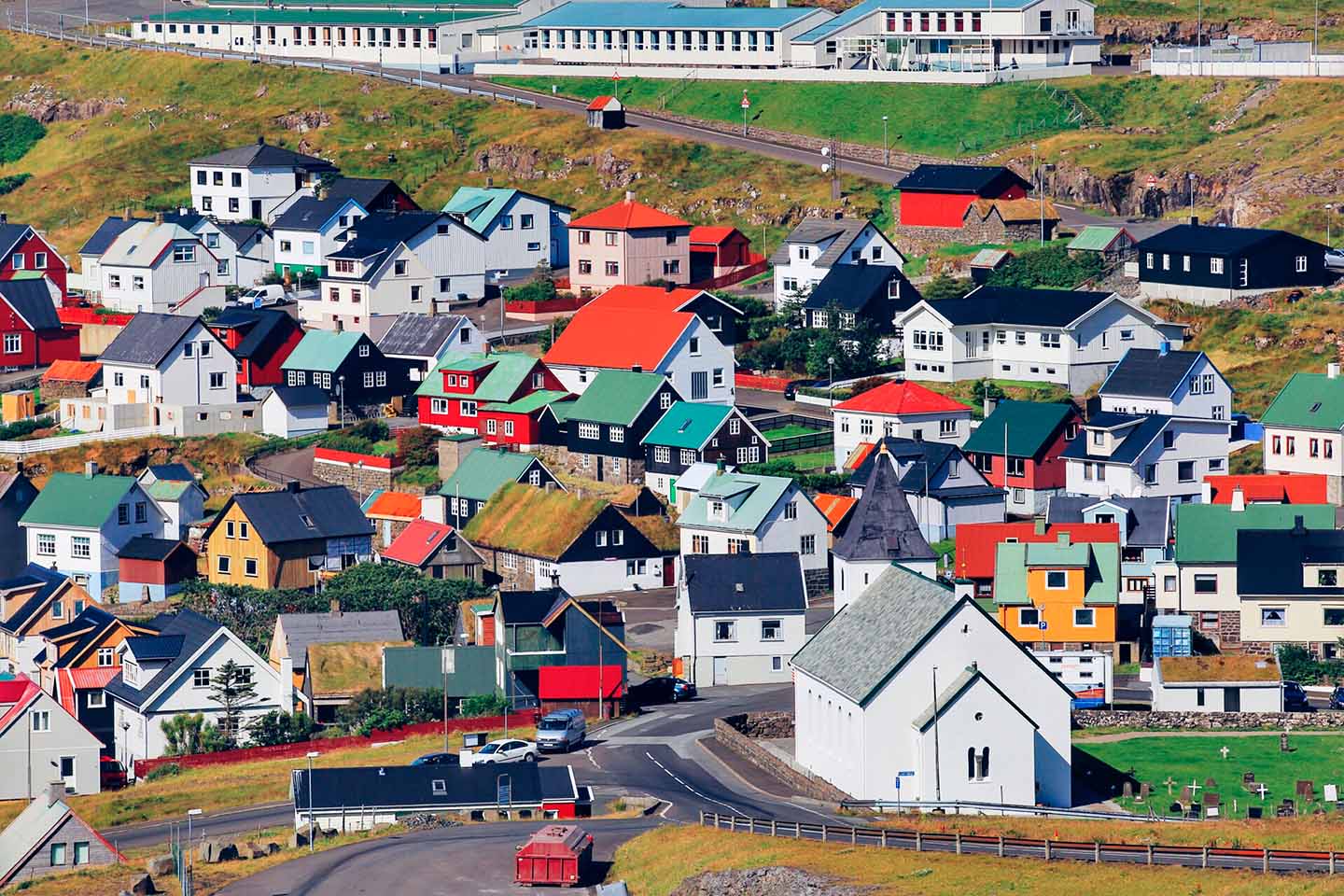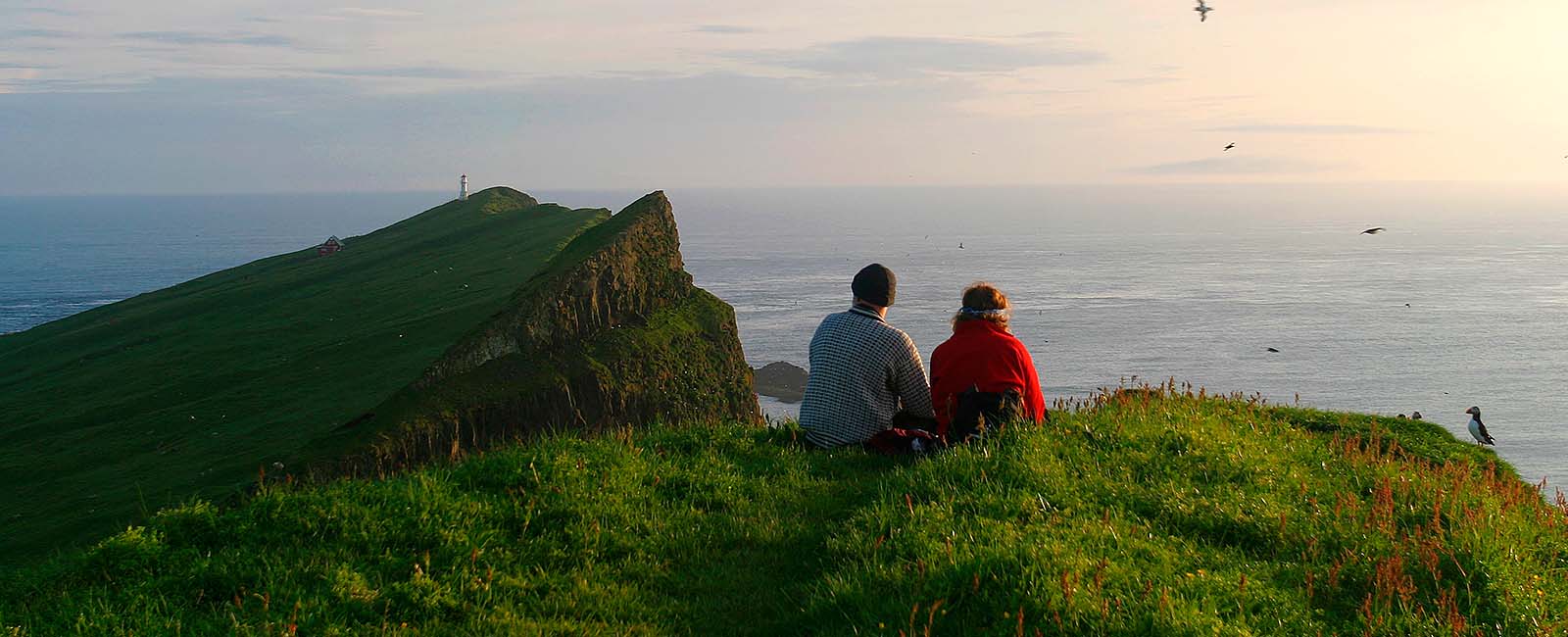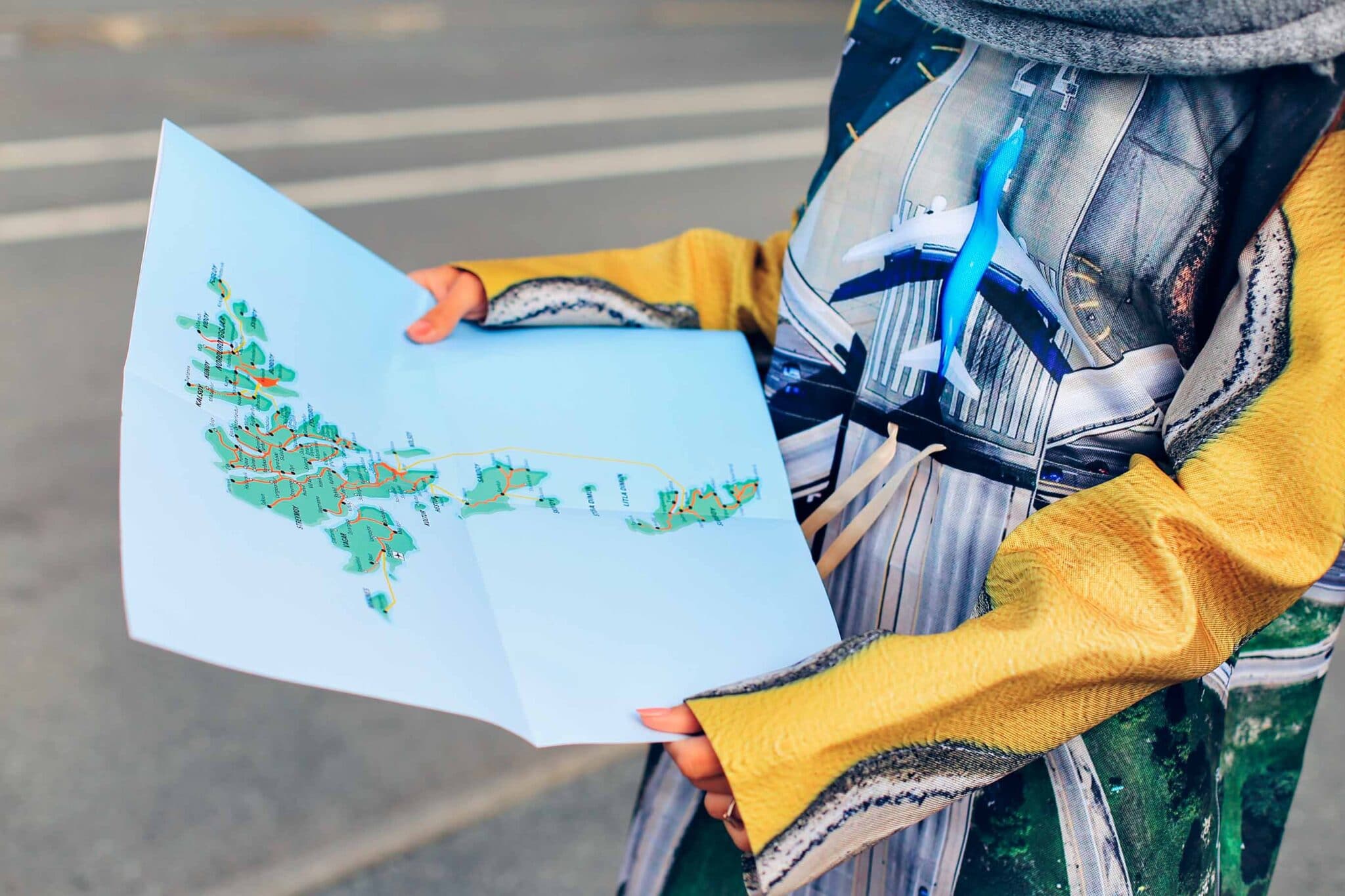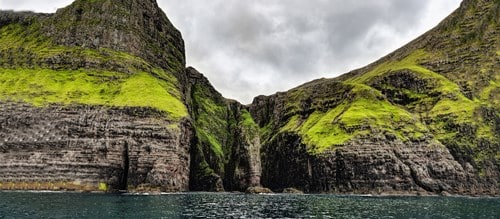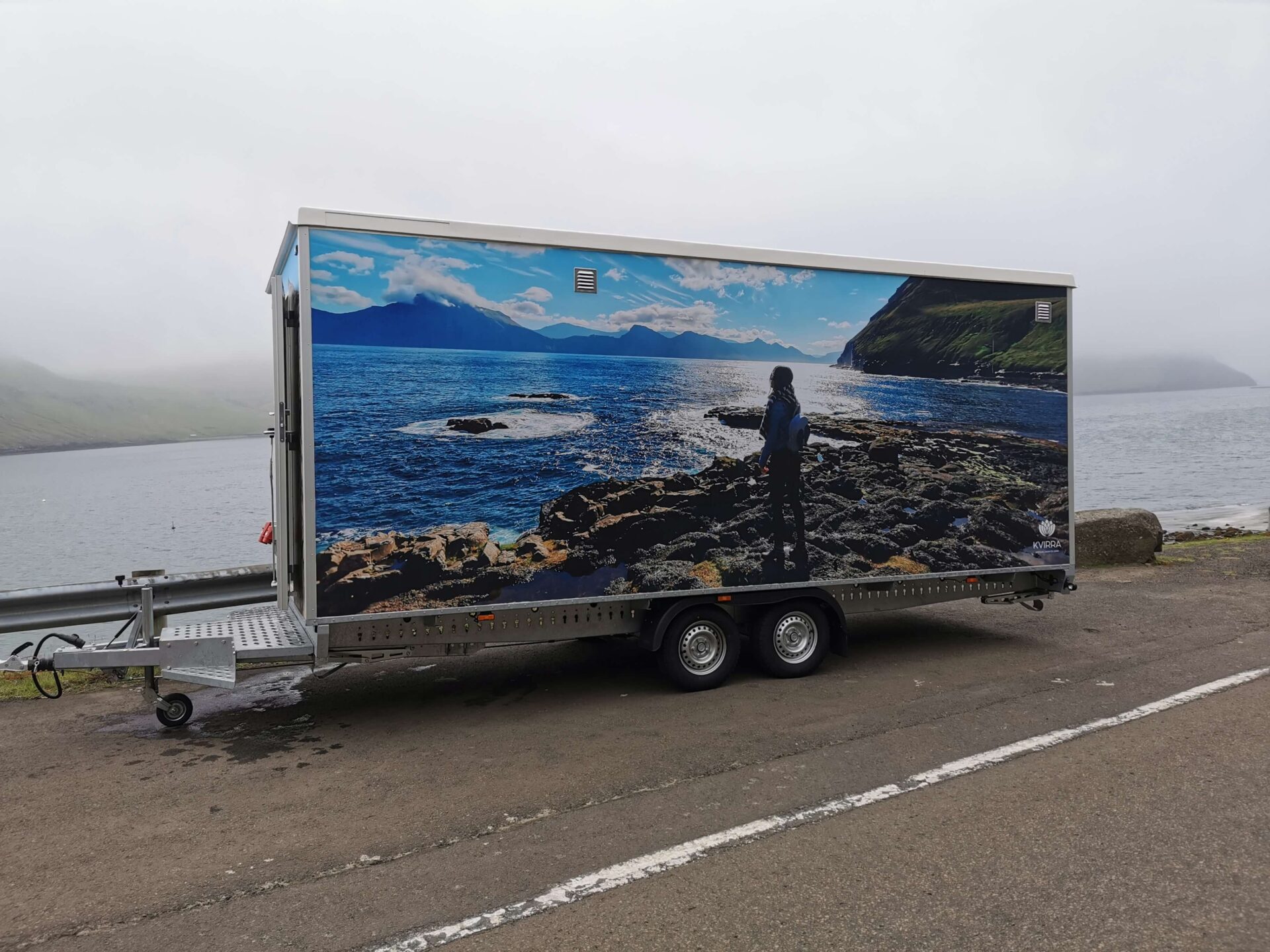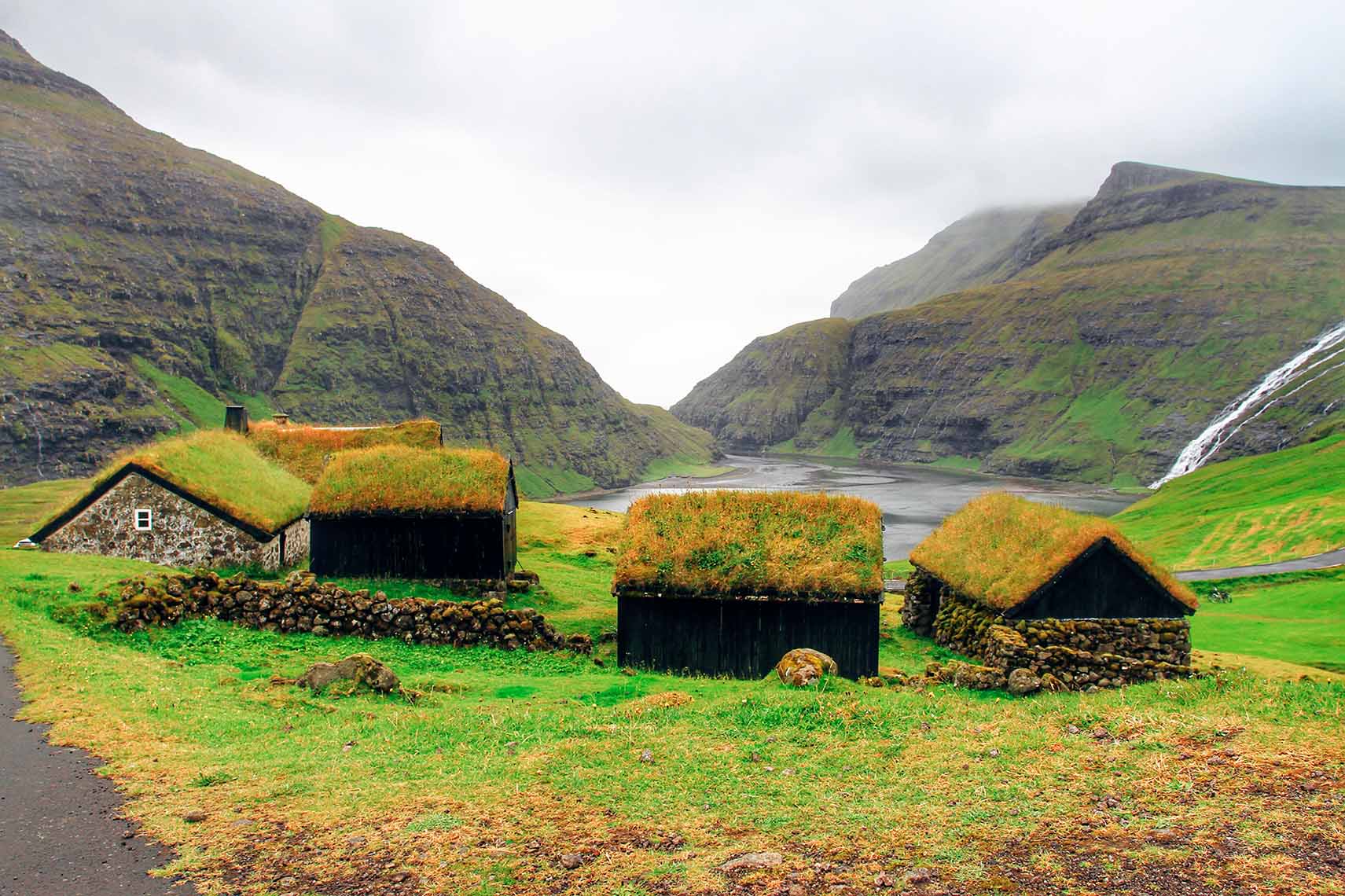Hvalvík – Vestmanna
Bus route 400 runs from Tórshavn and Fuglafjørður with a stop in Hvalvík
The trip begins at the river Myllá which runs north of the Mission house in Hvalvík. Walk along the river, through a gate and through an old fenced cattle way. There is a narrow path along the river on the north side. The first cairn is some 200 m from Hvalvíksgjógv.
When you have passed Eggjarmúli, there is a fine view through Saksunardalur, the longest valley in the country. From here, follow the high voltage electricity line path all the way to Vestmanna.
The first mechanical digger bought by the Faroes came to Hvalvík. It was called the Hvalvíkskúgvin. On one occasion, the people from Vestmanna wanted to borrow it for some work and it was carried up over Hvalvíksskarð along this path.
Now, you arrive at a cairn, stacked on a large stone called Kellingarsteinur (witch’s stone). At the next cairn after Kellingarsteinur, the path divides. The path south goes to Kvívík and the path north goes to Vestmanna.
On top of Hvalvíksskarð, you can see over to Mýrarnar and one of the first of SEV’s dams, built in the early 1960s. To the south is the mountain range Egilsfjall, Goturshálsur, Sátan and Skælingsfjall and on Vágar, you can see Reynsatindur, Heldarstindur and Havnartindur. Loysingarfjall is just in front of you. There is an account of a girl in Vestmanna who disappeared from the town and could not be found. The next day, a shepherd found her high up Loysingafjall. She said that a man in white clothes had led her by the hand and fed her. No one knew this man.
Another report is about a young milkmaid who disappeared in the swollen river at Gjógvará. She had tripped and fallen and was carried down the large waterfall. There was no thought of her coming out alive from the fall. When people at home heard the news, they immediately went out to search. But they found no body. The girl was not dead. Naked, in a bad state, she was lying in the cleft, clinging to a stone. She could hear people calling for her, but she did not dare to call out because she was afraid of huldu people (stone spirits) and trolls. Not until the day after when the river had settled down, did she dare to approach the house. It was a miracle that she survived the incident.
The cairns and the high voltage electricity line take you to the left side of Bjendalsgjógv. When the path twists southwards, you should be careful as there is a steep downwards slope. There are two possibilities of walking down to Vestmanna. By the dam at Fossá, the path divides. You can follow the road and walk down to á Fjørð or you can go over the first dam, follow the cairns and come down to Vestmanna along Gjógvará (where the milkmaid disappeared) and down to Miðalsbrekka.
Bus route 100 runs from Vestmanna to Tórshavn
Source: “Walking in the Faroe Islands” Published by the Faroese Tourist Board in 2003.
